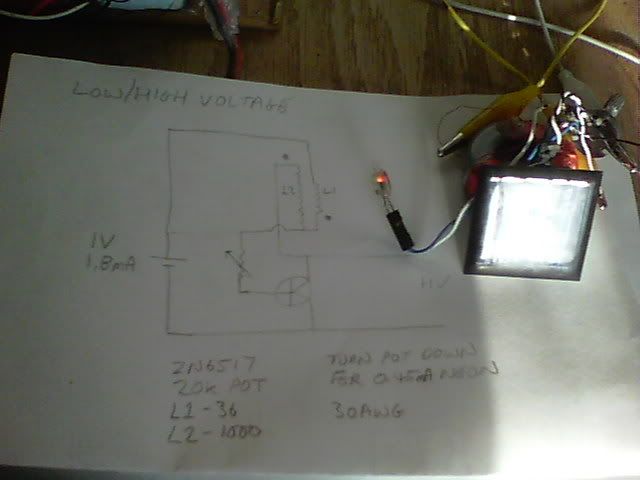Slayer's "JT type setup"
@Slayer
I spent the last two days working with that new circuit that you showed. Thanks for posting it. It is very interesting. I'm sure that you have done what I have done and played around with different versions of it. I ran an altered circuit today in the "Exciter" mode on a rather small homemade Mg/Cu crystal cell. One volt and 2 mA.
We have done so many of these circuits by now I am starting to lose track of them. We may have done this before but I don't think so. It really isn't a Joule Thief (blocking oscillator) in this configuration. It is something different. I tried the circuit with an air core bifilar and it didn't work. The small Elelctronic goldmine ferrite toroid worked fine. I used about 20 turns each of 24ga wire on the toroid.
I tried the circuit with an air core bifilar and it didn't work. The small Elelctronic goldmine ferrite toroid worked fine. I used about 20 turns each of 24ga wire on the toroid.
Lidmotor
@Slayer
I spent the last two days working with that new circuit that you showed. Thanks for posting it. It is very interesting. I'm sure that you have done what I have done and played around with different versions of it. I ran an altered circuit today in the "Exciter" mode on a rather small homemade Mg/Cu crystal cell. One volt and 2 mA.
We have done so many of these circuits by now I am starting to lose track of them. We may have done this before but I don't think so. It really isn't a Joule Thief (blocking oscillator) in this configuration. It is something different.
 I tried the circuit with an air core bifilar and it didn't work. The small Elelctronic goldmine ferrite toroid worked fine. I used about 20 turns each of 24ga wire on the toroid.
I tried the circuit with an air core bifilar and it didn't work. The small Elelctronic goldmine ferrite toroid worked fine. I used about 20 turns each of 24ga wire on the toroid. Lidmotor








Comment